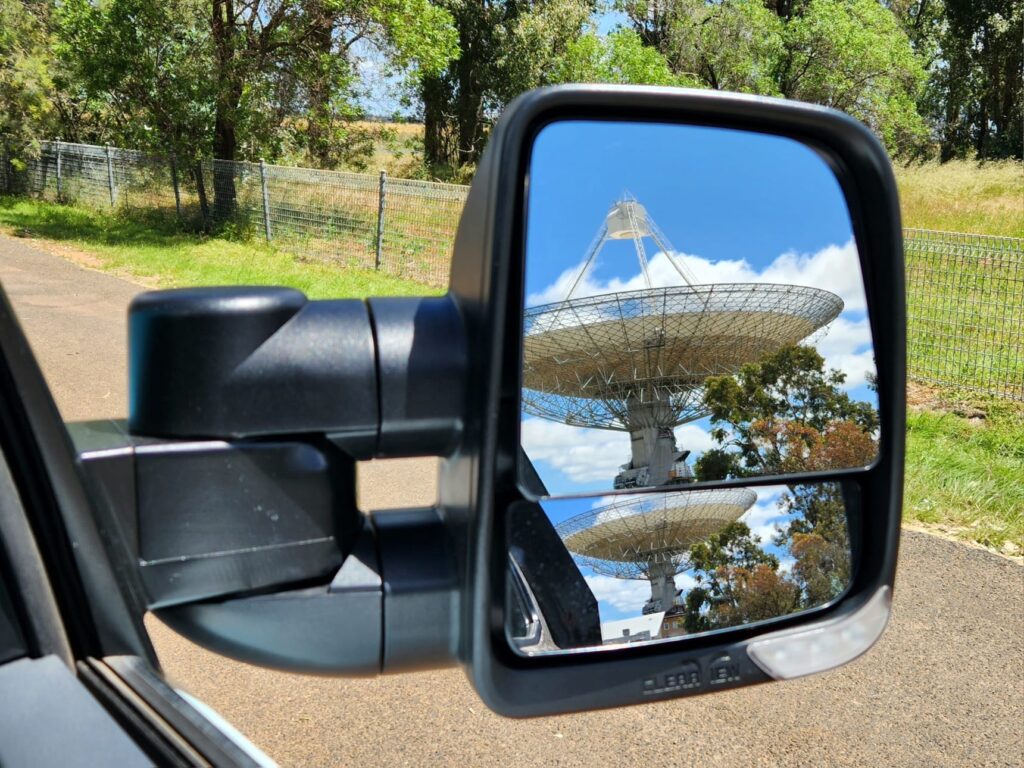Mirrors can occasionally possess a slight curvature, stemming from the manufacturing process. This curvature is often a result of cost-effective production methods that prioritize simplicity over achieving a perfectly flat surface. These curved mirrors might mitigate certain distortions that a completely flat mirror could present, thus reducing optical aberrations in specific applications like telescopes or reflective surfaces. Additionally, their use can be intentional for aesthetic purposes or to fulfill particular functional needs, such as magnification or light focusing.
However, while some mirrors have a slight curve, many everyday mirrors, like those found in homes or bathrooms, are crafted to be as flat as possible to provide an undistorted reflection for general use.
How do manufacturing processes influence mirror curvature?

Manufacturing processes significantly influence mirror curvature, as they determine the precision and accuracy with which the mirror surface can be shaped. The curvature of a mirror refers to the extent of its deviation from a flat surface, impacting its ability to reflect light accurately. Various manufacturing methods can affect mirror curvature:
Grinding and Polishing
Mirrors are often manufactured by grinding and polishing a substrate material such as glass or metal. During this process, the surface is ground and polished to achieve the desired curvature. The precision of the grinding and polishing equipment, as well as the skill of the technicians, dictate the final curvature.
Molding and Casting
Some mirrors are produced using molding or casting techniques, where molten material is poured into molds to create the mirror’s shape. The mold’s design and the casting process influence the curvature of the mirror.
Coating and Deposition
In the case of reflective coatings on mirrors (such as aluminum or silver), the deposition process can affect the mirror’s curvature. Deposition techniques like physical vapor deposition (PVD) or chemical vapor deposition (CVD) must be controlled to ensure uniform coating thickness and maintain the desired curvature.
Quality Control
Precise measurements and quality control processes are essential to ensure that the manufactured mirror matches the intended curvature specifications. Advanced metrology tools like interferometers are used to measure surface irregularities and curvature deviations accurately.
Temperature and Environmental Factors
Manufacturing processes may involve heat or other environmental factors that can affect the material’s properties, potentially causing changes in curvature. Controlling these factors during manufacturing is crucial to maintaining the desired mirror shape.
Post-Manufacturing Processes
After the initial manufacturing steps, additional processes like annealing or thermal treatments might be applied to reduce residual stresses in the mirror material, which can impact its curvature.
Overall, the selection of manufacturing techniques, the precision of equipment, the expertise of technicians, and the quality control measures employed throughout the process play significant roles in determining the final curvature of mirrors.
What are the reasons behind mirror curvature?
Mirror curvature refers to the deviation of a mirror’s surface from a completely flat plane. There are various reasons behind mirror curvature, both intentional and unintentional, that affect its optical properties and performance. Some of the key reasons include:
Optical Purpose
Curvature is intentionally introduced into mirrors to achieve specific optical effects. Concave and convex mirrors, for example, are curved inward and outward, respectively, to focus or diverge light rays.
Concave mirrors are used in telescopes, reflecting telescopes, and makeup mirrors for magnification, while convex mirrors are employed in security mirrors and wide-angle viewing applications.
Manufacturing Techniques
The manufacturing process itself can introduce curvature into a mirror. Grinding, polishing, molding, and casting techniques used to shape mirrors may result in intentional or unintended curvature variations.
Material Properties
The physical properties of the mirror substrate or reflective coating can affect its curvature. Changes in temperature, stress, or material composition can cause the mirror to warp or change its shape over time.
Environmental Factors
Exposure to temperature variations, humidity, pressure, or other environmental factors can cause a mirror’s substrate material to expand, contract, or deform, leading to changes in curvature.
Mounting and Installation
Improper mounting or installation of a mirror can induce stress or distortions that affect its curvature. Uneven pressure or support on the mirror’s surface can cause it to bend or warp.
Mechanical Stress
Mechanical forces applied during handling, transportation, or usage can impact mirror curvature. Mishandling or accidental impacts may result in deformation or damage to the mirror surface.
Post-Manufacturing Processes
Additional treatments, such as coating applications or thermal treatments, can sometimes alter the mirror’s curvature inadvertently.
Maintaining the desired curvature in a mirror is crucial for its intended functionality. Manufacturers employ stringent quality control measures and precision techniques to ensure that mirrors meet specific curvature requirements for their intended applications.
What are some common examples and applications of curved mirrors?
Curved mirrors, whether concave or convex, find various applications across different fields due to their unique optical properties. Here are some common examples and applications of curved mirrors:
Concave Mirrors
Telescopes
Concave mirrors are used in reflecting telescopes to gather and focus light from distant objects, allowing astronomers to observe celestial bodies.
Satellite Dishes
Large concave mirrors are employed in satellite dishes to collect and focus signals from communication satellites or for receiving television broadcasts.
Dentist Mirrors
Small concave mirrors are used by dentists to see magnified images of the teeth.
Makeup Mirrors
Some makeup mirrors use concave surfaces to magnify the reflection, aiding in applying makeup with more precision.
Headlights and Reflectors
In automotive headlights and other lighting applications, concave mirrors are used to focus and direct light.
Convex Mirrors
Security Mirrors
Convex mirrors, also known as “fish-eye” or “dome” mirrors, are used in surveillance and security to provide a wide-angle view, allowing a larger area to be observed.
Rearview Mirrors
Many vehicles use convex mirrors for their side-view and rear-view mirrors, providing a wider field of view to the driver.
Decorative Mirrors
Convex mirrors are sometimes used as decorative pieces due to their unique distorted reflection properties, creating interesting visual effects.
Ophthalmology
Some specialized lenses used in examining the eye have convex surfaces.
Other Applications

Solar Concentrators
Curved mirrors, especially parabolic mirrors, are utilized in solar concentrators to focus sunlight onto a small area, generating heat or power in solar energy systems.
Microscopes and Magnifying Devices
Both concave and convex mirrors are used in optical devices to magnify images, enhance visibility, or redirect light.
Projectors and Camera Lenses
Curved mirrors are used in projectors and certain types of cameras to focus or manipulate light.
The specific curvature and shape of these mirrors determine how they reflect and refract light, allowing for various practical applications across industries such as astronomy, telecommunications, automotive, healthcare, renewable energy, and more.
FAQ’s
Why have a convex mirror?
Convex mirrors are used because they provide a wider field of view compared to flat or concave mirrors. They offer a diminished but broader reflection, making them suitable for applications requiring a broad viewing angle, like in traffic mirrors or security surveillance.
What is the image formed by curved mirrors?
Curved mirrors can form both real and virtual images. Real images are formed by concave mirrors when the object is placed beyond the focal point, while virtual images are produced when the object is within the focal point. Convex mirrors, however, produce only virtual images that are diminished and upright.
Why are mirrors concave and convex?
Mirrors can be concave or convex based on their curvature. Concave mirrors curve inward and can focus light, creating real or virtual images depending on the object’s position. Convex mirrors curve outward and produce virtual, diminished images, offering a wider field of view.
Why are some mirrors called concave and some convex?
The terms “concave” and “convex” refer to the shape or curvature of the mirror surface. A concave mirror curves inward, causing light to converge, while a convex mirror curves outward, leading to light diverging. These differing shapes affect how light reflects off the surface.
How are mirrors curved?
Mirrors are curved using various manufacturing techniques. For instance, grinding and polishing processes shape glass or metal into the desired curved surface, creating concave or convex mirrors. Molding, casting, or bending techniques can also be employed to achieve the desired curvature.
How are curved mirrors formed?
Curved mirrors are formed through processes like grinding and polishing, where the surface of the mirror substrate is shaped to create the desired curvature. Additionally, molding, casting, or other techniques may be used during manufacturing to produce curved mirror surfaces.
Final Words
Mirrors can sometimes be a bit curved because of how they’re made. Manufacturers often use simpler methods to create mirrors, which can result in a slight curve rather than a completely flat surface. This curvature might affect how the mirrors work and where they’re used.
Despite some curved mirrors, most mirrors we use every day, like the ones at home or in bathrooms, are made to be flat for clear reflections without any bending or distortion.

